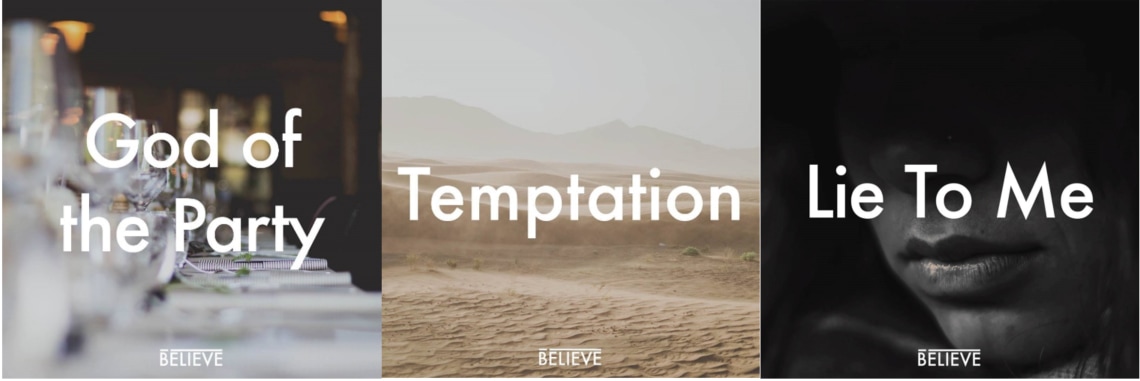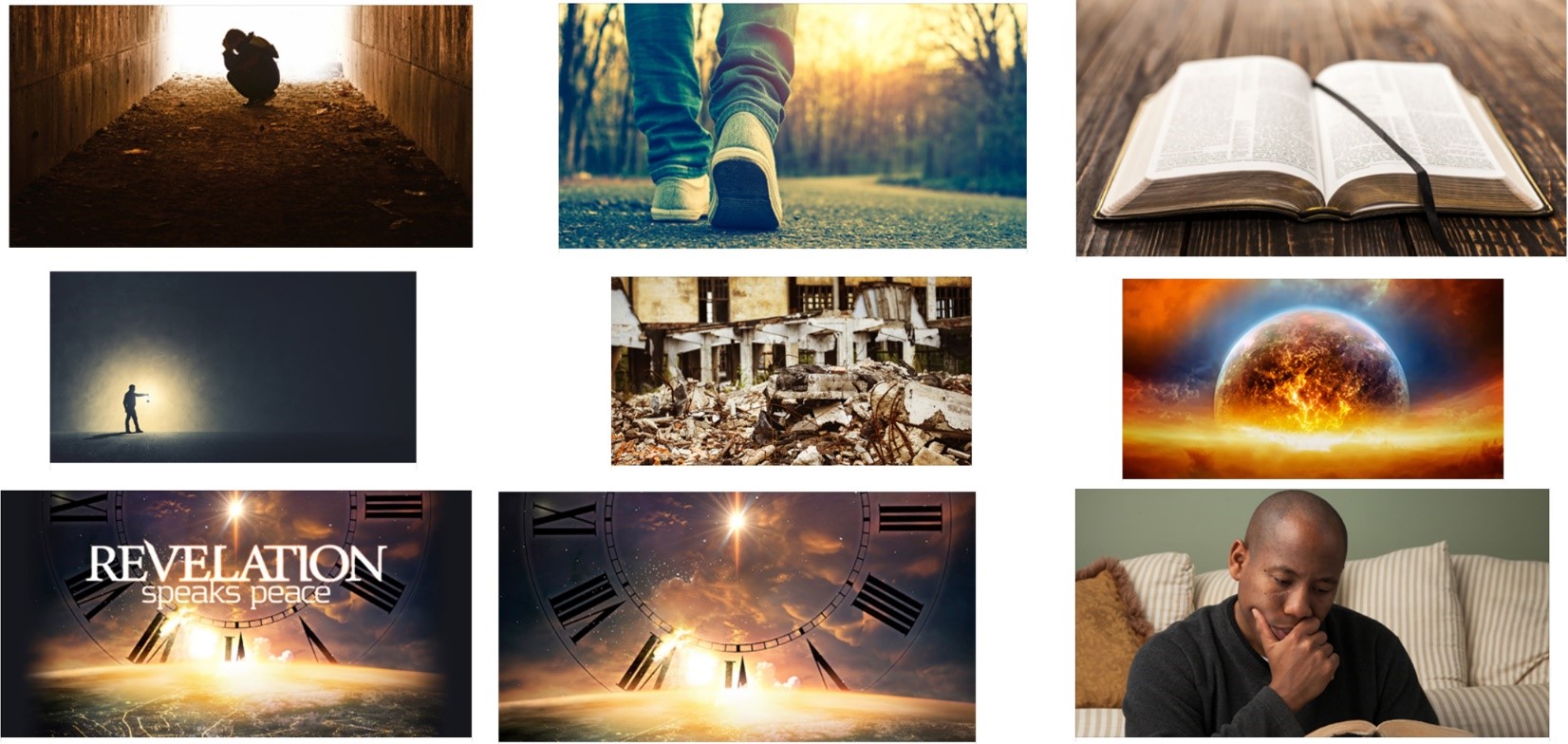Jamie Schneider Digital Strategist for the North American Division. He who is careless and heedless in uttering words or in writing words for publication to be sent broadcast into the world, sending forth expressions that can never be taken back, is disqualifying himself to be entrusted with the sacred work that devolves upon Christ’s followers at this time. ―Counsels to Writers and Editors, Ellen G. White Long before audio/visual equipment was invented, Ellen White knew how to do the figurative mic drop better than anyone. Regardless of how you view Ellen White, this quote stands as a powerful and relevant reminder of the solemn task we have been charged with. I encourage everyone who is on social media to read her Counsels to Writers and Editors. Social media is the ultimate equalizer. It gives a voice and a platform to anyone willing to engage. ―Amy Jo Martin Social media has eased entry into the world of telling stories, sharing ideas, and expressing thoughts to a wide audience. It used to be that if you wanted to tell your story to a broader audience, you had to buy your way in through costly traditional media. Times have changed; we are all writers and publishers now. But with this ability comes responsibility. Social media, at its very essence, is people connecting with people to create a collective human story. We all want to be heard, and we all now have a platform for public speaking. You can have hundreds, thousands, even millions of people viewing your messages. But, as so often is the case, the person we need to set boundaries with is ourselves. Your personal social media is a great opportunity to share your story and contribute to the collective conversation. It can serve as a powerful witnessing tool, revealing what God is accomplishing through you and your work. But… Would someone know you are a Christian based on your social media? What values are you reflecting? Would your audience like Christians based on your behavior online? I once listened to a powerful sermon in which the speaker asked, “If you were pulled into court today, is there enough evidence in your life to convict you of being a Christian?” Well, what evidence does your social media provide? Is your use of social media driving people away from the church or toward Christ? Think about it. Social media is public by nature and has blurred the lines between your work for the church and your personal life. This can be a good thing. Follow principles of responsible use and be a living testimony to others. Be a light among the quagmire of negativity online. Let your light shine before men in such a way that they may see your good works, and glorify your Father who is in heaven. (Matthew 5:16) We were all taught in primary school to T.H.I.N.K. before we speak. It is not enough for something to be True; it must also be Helpful, Inspiring, Necessary, and Kind. Every opportunity to share is an opportunity to either advance or hinder the kingdom of God. People should use social media; it is a powerful tool. After all, the appeal of social media is that it reflects a basic human need, and that need is to connect and share. As disciples, that means connecting with each other and God as well as sharing the gospel.
Your posts can have a much greater impact and reach than you imagine. We recognize and value diversity of opinion within our community, but as an employee or member, your followers may confuse your opinion with the official position of the church. While this is most likely not your intention, be mindful to:
How many people are you willing to drive out of the church to make a point or to “win” your argument? Public figures have the potential to magnify division and take thousands out of the church. For those of us on an individual level, we may discourage someone from ever considering Christianity. We talk about a life lived as a reflection of Christ but turn into devils on social media. People say things on social media that they would never dare to say in person. We absolutely respect and value different perspectives among our members and leadership. But as representatives of the church, we must not use our public speaking platforms as a sounding board for the problems we see in the church, in leadership, and our country. We are a family; let’s resolve our internal issues privately. It would be considered obscene to go knocking on doors and to begin your evangelistic effort by lambasting the very church you are asking people to join. So why do it online? We must protect our church family and frame all of our digital communications with the salvation of others in mind. Social media is a powerful tool for sharing the gospel; let’s use it wisely and err on the side of caution. The power and efficiency of our work depend largely on the character of the literature [message] that comes from our presses [social media profiles]. Therefore, great care should be exercised in the choice and preparation of the matter that is to go to the world. The greatest caution and discrimination are needed. Our energies should be devoted to the publication of literature [posts] of the purest quality and the most elevating character. Our periodicals [Tweets and updates] must go forth laden with truth that has a vital, spiritual interest for the people. ―Counsels to Writers and Editors, Ellen G. White Freedom of speech does not mean freedom from consequences. Carelessness in speech can and will inhibit our ability to accomplish our mission. When we turn people away from the church, we are not only working against ourselves, we are working against God. You can also get your ministry or self in legal trouble. In many cases, you may endanger your job and reputation. This can all be avoided by simply using discretion and focusing on the positive, such as what God is accomplishing through your church or ministry. Let’s not fall into the trap of using the negative and sensational to get attention online when God calls us to focus on what is good and holy. Finally, brothers, whatever is true, whatever is noble, whatever is right, whatever is lovely, whatever is admirable―if anything is excellent or praiseworthy, think about such things. (Philippians 4:8) We all have the same goal. I truly believe that social media is a vital tool for accomplishing our mission in the 21st century. Young people are leaving the church at a startling rate. They spend 7 to 12 hours a day behind a screen. Up to 9 hours of that time is spend on social media. What messages are you sending them? We must take the gospel where they are, and not where we want them to be. But when our actions and our speech contradict each other, we only have ourselves to blame for the rising egression. I hope that this post changes how you view social media. Let’s work together to get the job done and go home. And this gospel of the kingdom will be preached in all the world as a witness to all the nations, and then the end will come. (Matthew 24:14) Download our full presentation on social media safety and best practices. The Social Media + Big Data department will be partnering with Adventist Learning Community this year to create a professionalism course centered around use of social media.
Visit SDAdata.org to learn more about #DigitalEvangelism. Jamie Schneider Digital Strategist for the North American Division. In the fall of 2016, the Chesapeake Conference piloted the Voice of Prophecy Series, “Revelation Speaks Peace,” in 30 churches. This four-week series took an in-depth look at prophecy, with multiple sessions of study per week. We ran a series of ads using Facebook’s Ad Manager targeting Adventists and potentially interested Christians in Maryland. When we compared registration zip codes to the location of each host church, we found that people generally did not travel more than 15 miles to attend. In Maryland 15 miles translates to approximately 30 to 45 minutes of driving. This means that ad impressions spent in the areas where a host church was not nearby, did not result in meaningful conversions. For this campaign, conversions means registration and attendance. Unfortunately, this data was not available until after the campaign ended, but this valuable lesson can be applied to future evangelistic series. In conclusion, for similar evangelistic campaigns, geo-targeting the ads to within 20 miles of each church city, instead of over the entire state, would maximize the impact of the funds spent on advertising. This finding makes sense given the large time commitment involved in attending the full series. It’s more practical to attend if the host location is nearby.
Each community is different, so if a conference or church is hosting an evangelistic series in a more rural community that is accustomed to driving farther, then the targeted distance from the church may be increased without wasting ad impressions and funds. Or if an event or series is shorter and held on the weekends, then people may be able and willing to drive farther. But as always, test and see what works best for your community, and then let us know. Comment below or connect with us using #DigitalEvangelism. Jamie Schneider Digital Strategist for the North American Division. Pictures and video are taking over on social media, which is evident with the rise in popularity of platforms like Instagram and Snapchat. According to Instagram, 80 million photos are shared per day on the app. But it’s not enough to just post images; they have to be good images that evoke a positive reaction. Social media is like a constant conversation, and compelling images help you stand out in the newsfeed. This means we need to divorce ourselves (at least in digital communications) from the cherished images of our childhood, in favor of images that can capture the attention of a wider (and younger) audience. This is especially important for reaching Millennials and the emerging Generation Z. They spend up to nine hours a day on social media and are constantly bombarded with messages that challenge their beliefs. Many of these conflicting messages seem very relevant and enticing to them. “And no wonder, for Satan himself masquerades as an angel of light” (2 Corinthians 11:14). Therefore, we must speak to them in a “language” and style they understand or else we will continue to lose them on account of our own irrelevance. Part of the success of our campaigns geared towards young adults, such as #HopeTrending and @iBelieveBible, can be attributed to the fact that the communications style, design, platforms, and images are all geared towards young people. The #iBelieveBible project is a prime example as it is content created by young adults for young adults―presenting difficult topics in an un-sanitized and provocative way that welcomes honest conversation. To get you started, here are some helpful guidelines for choosing strong images:
To learn more about designing for social media, download our digital images presentation. Case Study: Why the Burning Earth was Not So Hot How does this principle play out in real-life digital campaigns? In the fall of 2016, the Chesapeake Conference piloted the Voice of Prophecy Series, “Revelation Speaks Peace,” in 30 churches. To promote awareness around the series, we placed ads targeted at two groups of people in the area. The first group was local Adventists, and the second group was locals interested in the following topics: Bible, Bible prophecy, Christianity, prophecy, spirituality, and religion. Adventists were excluded from the second group. For each of the two ad groups, the message was the same: “What is happening in the world today? Join us to unlock the secrets to peace and a hope-filled future. Register to attend at a location near you!” However, we tested a mix of provided images (more traditional) against stock imagery available from Facebook. We found that for the non-Adventist group, the stock images from Facebook (below) had the strongest click-through rates, and/or highest relevance rating. Each image evokes a sense of conflict, journey, and/or loss of hope. For the Adventist group, the following images performed the strongest. For the Adventist group, we saw mixed preferences toward both the stock images and the classic Adventist imagery. The strong performance of more traditional Adventist imagery may be due to a type of “brand awareness” among our members. Having said that, the stock imagery did outperform the more traditional Adventist imagery even among Adventists, and especially among the under 35 crowd.
I also wonder if images like the “burning earth” actually repel audiences more than interest them, especially among non-Adventists. Such images convey a sense of condemnation and judgement, when people are looking for freedom from fear and confusion. The clock above the earth may not be understood by people unfamiliar with the prophecies. These are just theories, but what we know for sure is that people respond more positively to fresher, modern images that reflect the human experience. In terms of “Revelation Speaks Peace,” we know this advertising was successful because over 50% of the people who attended were non-Adventist. Normally we would not expect more than one-third of the participants to be from outside our faith. To learn more about the “Revelation Speaks Peace” campaign, download the full report. Post your questions or comments below. Engage with us using #DigitalEvangelism Dustin Comm Director of The Media Story, podcast and blog. As anyone familiar with Facebook Pages knows, their algorithms change all the time, so note the date on this post and take it with a grain of salt if you're coming to it years later... :)
So far in 2017, Facebook videos aren't getting as many views as 2016, relatively speaking. Pages receiving a certain number of views last year are seeing half the views on average this year. In general with Facebook, it's easy to get hung up on the "why," and trying to understand/beat the algorithm, but I'd just focus on the "how" of creating more effective video posts with these changes, which sometimes takes some experimenting. Many pages are now focusing on achieving longer viewing time to boost their post in the rankings. Running down a Top 5 list or starting with an unresolved conflict from the beginning which creates anticipation to see the end will increase view duration. The more complete views, the more Facebook will show the video to users. Also, with Facebook soon introducing ads into their videos and sharing revenue with publishers, many videos below the 90-second threshold to qualify for ad sharing won't be featured as high. Make sure your videos are at least a minute and a half to avoid that penalty. And if you haven't used Facebook Live yet, those videos are showing up first in users' feeds and have top priority over anything else the platform offers. So if you can record something off-the-cuff, go with Live and get an automatic boost from the algorithm. Don't let these new changes get you down. Video is the most powerful tool we have to tell our story and invite our communities into that story! Make sure you're using video no matter what. This article was originally posted on The Media Story. |
Archives
August 2020
Categories
All
|
- Home
- BLOG
-
RESOURCES
-
RESOURCE MENU
>
- ADVENTIST IDENTITY GUIDELINES
- BIG DATA RESOURCES
- BRANDING, IMAGE & DESIGN RESOURCES
- CHURCH/MINISTRY SPECIFIC RESOURCES
- COPYRIGHT & TRADEMARK BASICS
- COURSES
- EMAIL RESOURCES
- GUIDANCE FOR HIRING SOCIAL MEDIA POSITIONS
- PODCASTS
- REPORTS & CASE STUDIES
- SOCIAL MEDIA RESOURCES
- (SOCIAL) VIDEO RESOURCES >
- TEXTING 4 CHURCHES
- TRACKING & ANALTYICS
- WATCH VIDEOS & TUTORIALS
- WEBSITE TIPS
- SOCIAL MEDIA GUIDELINES
-
RESOURCE MENU
>
- SEO
- Digital Discipleship & Evangelism
- COVID-19 RESOURCES
- eNEWSLETTER












 RSS Feed
RSS Feed